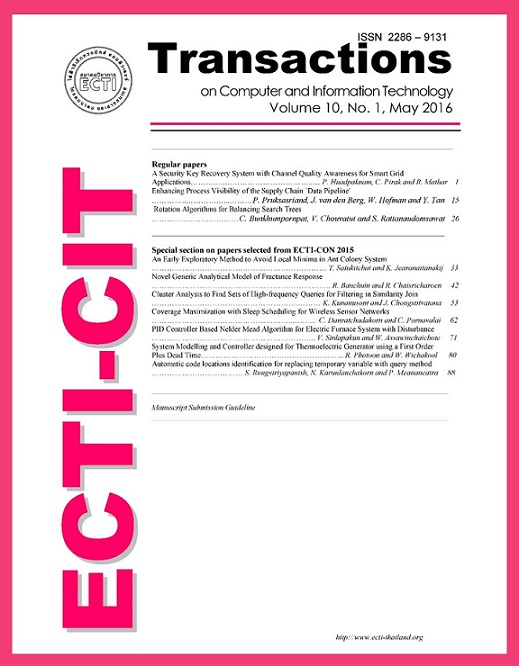Coverage Maximization with Sleep Scheduling for Wireless Sensor Networks
Main Article Content
Abstract
Sleep scheduling mechanisms have been widely used in wireless sensor networks so as to extend the lifetime of networks. Sensors are able to decide to be either in active or sleep mode to save the energy. Sensing coverage area is an important factor for some applications such as Intrusion Detection. It is necessary to have the full-sensing-covering set of active nodes on these applications. In this paper, we propose the Coverage Maximization with Sleep Scheduling protocol (CMSS) which is a decentralized protocol and maximize sensing coverage of the network. In our proposed solution, the area of network is divided into grid cells. Each sensor creates a neighbor table and transforms into cell-value table. These tables are used to make decision which mode it should be on each sensor. Simulation results show that CMSS not only consumes less overhead energy than Maximum Sensing Coverage Region (MSCR), but also has a lower number of selected active nodes. Besides, communication range of sensors does not affect to the efficiency of networks like the Layered Diffusion-based Coverage Control protocol (LDCC) which exploits hop count information.


